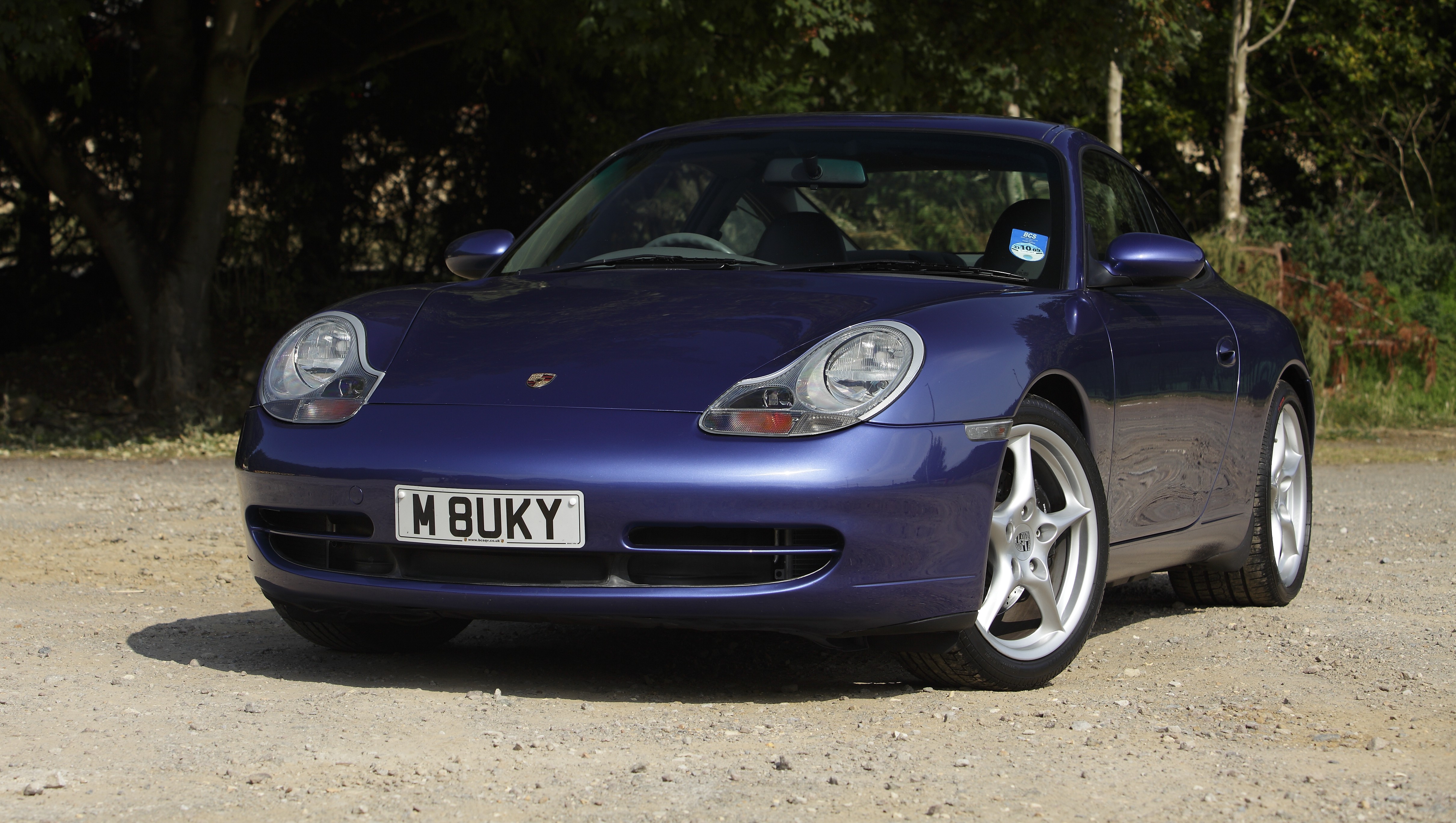Thought of the day: air-cooled vs water-cooled
Back in the days when the world was a simpler place, all you needed to keep a 911 engine cool and collected was a plentiful supply of fresh air. Then, in late 1997, an all-new 911 was introduced, and an exotic mix of distilled water and chemicals was suddenly required to do that simple, but essential job. Many Porsche purists looked on in horror, regarding this new arrival, the 996, as equivalent to the coming of the anti-Christ. It might have looked like the real thing, but it certainly wasn’t the real thing, or so the thinking went. They refused to love it, which was a shame because actually there was a lot to love.
In comparison to the 993 it replaced, the 996 was lighter, stronger, more comfortable, more spacious and more powerful. The interior looked as if it had actually been styled, rather than just laid out by one of the mechanics in his lunch break. Anachronistic touches like the bottom pivoting pedals or the unusually vertical screen had finally been addressed. But why abandon that most quintessentially Porsche characteristic, the air-cooled engine?
There is no denying that Porsche has made some strange decisions in its history. The attempt to kill the 911 and move all of its range to a conventional front engine layout certainly comes to mind. It was tempting to see the move to water cooling as a similar marketing whim, but in truth it was far from that. The world was changing, and the air-cooled engine simply wasn’t able to change with it. Water cooling allowed an engine redesign that included four valves per cylinder, and which brought the higher power outputs, the improved fuel economy, and the reduced emissions that the market and legislators were all demanding. It also bought Porsche a future development curve, because while just about every last gasp of power had been rung out of the air-cooled engine, the new engine had many years of potential future upgrades engineered into it.
Journalists tested it and raved about it, and the public loved it so much they bought it in larger numbers than any previous model. People who had never considered buying a Porsche before sold their Jaguars, Ferraris, and even their Fords, and slapped their deposit cheques on dealers’ desks. Maybe this is where the problem started. Like sulky teenagers who lose interest in their favourite bands if they become mainstream, some purists shunned the 996 because they felt it had gone soft and lost its 911 soul. If by its soul they meant the tendency to bite you hard if your concentration slipped in the middle of a bend, then that is undoubtedly true. The 996 was an easier car to drive fast safely, and you probably didn’t need as much chest hair to get the best out of it. But these things are all relative. A senior source at Porsche told me that the new 991 was designed to be easier to drive than the 997, and to flatter the average driver. And I don’t see a problem with that.
This sort of attitude is not restricted to the devotees of the 993. Watch steam train enthusiasts standing in misty eyed ecstasy as an A3 Class 4-6-2 thunders past. Or the music fans who eschew CDs, because only vinyl can deliver that authentic sound. And if you look hard enough you’ll probably even find someone who insists that wooden tennis rackets are preferable for the subtleties of their game. But these are essentially nostalgic eccentrics, and I will defend anybody’s right to their eccentricity. What saddens me, however, is when someone feels the need to deride another’s pride and joy, for no better reason than a misplaced sense of superiority.
In case it sounds like I am trying to sell the 996 as the nearest thing to perfection since peach nectar was first mixed with Prosecco and called a Bellini, I am certainly not. Like any new design it had problems. The one that anybody considering buying a 996 will have heard about at length is the rear main seal, which causes a mess when it fails, but is fixable at relatively low cost. Less widely known about is the potential failure of the intermediate shaft bearing, which has the same effect as detonating a chunk of Semtex in the middle of the engine. And then there are head and cylinder liner cracks, which can allow oil to mix with that exotic coolant, and soon enough that Semtex effect can occur again. We are talking upwards of £10,000 if that happens. But these were occasional problems that applied to the early 3.4-litre engines, and had been pretty well engineered out by the late 3.4 and certainly for the uprated 3.6-litre engines.
I must declare an interest here. I am the besotted owner of a late 3.6 996 Cabriolet, which has never let me down, nor failed to raise my heart beat a little, even when I just catch sight of it parked outside the house. So does this mean I don’t like the 993? Far from it. I love the 993. It was far ahead of its time when introduced, and still has unrivalled character, charisma and road presence. The 993 did not stop being an icon just because the 996 was introduced, but by the same logic, it makes no sense to character assassinate the 996 just because it replaced its iconic predecessor. There is one positive side to all of this, however. If you are desperate to dip a toe into 911 ownership without having to sell your back garden to property developers to finance it, then a nice, well-maintained 996 is a remarkably cheap way to do it. And if you can run to a warranty, you will even be able to sleep at night as well.



Comments (3)